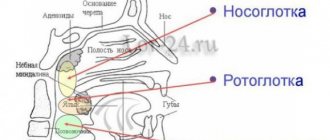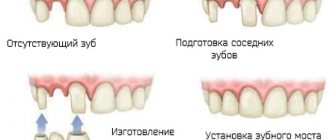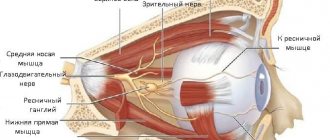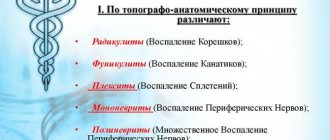The human body is a multi-stage structure, each organ and system of which is closely interconnected with each other and with the environment. And so that this connection is not interrupted even for a split second, a nervous system is provided - a complex network that permeates the entire human body and is responsible for self-regulation and the ability to adequately respond to external and internal stimuli. Thanks to the well-coordinated work of the nervous system, a person can adapt to the factors of the external world: any, even minor, change in the environment causes nerve cells to transmit hundreds of impulses at an incredibly high speed so that the body can instantly adapt to new conditions. Internal self-regulation works in a similar way, in which the activity of cells is coordinated in accordance with current needs.
The functions of the nervous system affect the most important processes of life, without which the normal existence of the body is unthinkable. These include:
- regulation of the work of internal organs in accordance with external and internal impulses;
- coordination of all units of the body, from the smallest cells to organ systems;
- harmonious interaction between humans and the environment;
- the basis of higher psychophysiological processes characteristic of humans.
How does this complex mechanism work? What cells, tissues and organs make up the human nervous system and what is each of its sections responsible for? A brief excursion into the basic anatomy and physiology of the human body will help you find answers to these questions.
Stages of nervous system development
In evolution, the nervous system has undergone several stages of development, which became turning points in the qualitative organization of its activities.
These stages differ in the number and types of neuronal formations, synapses, signs of their functional specialization, and in the formation of groups of neurons interconnected by common functions. There are three main stages of the structural organization of the nervous system: diffuse, nodular, tubular. The diffuse nervous system is the most ancient, found in coelenterates (hydra). Such a nervous system is characterized by a multiplicity of connections between neighboring elements, which allows excitation to freely spread throughout the nervous network in all directions.
This type of nervous system provides wide interchangeability and thereby greater reliability of functioning, but these reactions are imprecise and vague.
The nodal type of nervous system is typical for worms, mollusks, and crustaceans.
It is characterized by the fact that the connections of nerve cells are organized in a certain way, excitation passes along strictly defined paths. This organization of the nervous system turns out to be more vulnerable. Damage to one node causes dysfunction of the entire organism as a whole, but its qualities are faster and more accurate.
The tubular nervous system is characteristic of chordates; it includes features of the diffuse and nodular types. The nervous system of higher animals took all the best: high reliability of the diffuse type, accuracy, locality, speed of organization of nodal type reactions.
The leading role of the nervous system
At the first stage of the development of the world of living beings, interaction between the simplest organisms was carried out through the aquatic environment of the primitive ocean, into which the chemical substances released by them entered. The first oldest form of interaction between the cells of a multicellular organism is chemical interaction through metabolic products entering the body fluids. Such metabolic products, or metabolites, are the breakdown products of proteins, carbon dioxide, etc. This is the humoral transmission of influences, the humoral mechanism of correlation, or connections between organs.
The humoral connection is characterized by the following features:
- lack of an exact address to which a chemical substance entering the blood or other body fluids is sent;
- the chemical spreads slowly;
- the chemical acts in minute quantities and is usually quickly broken down or eliminated from the body.
Humoral connections are common to both the animal and plant worlds. At a certain stage of development of the animal world, in connection with the appearance of the nervous system, a new, nervous form of connections and regulation is formed, which qualitatively distinguishes the animal world from the plant world. The higher the development of an animal’s organism, the greater the role played by the interaction of organs through the nervous system, which is designated as reflex. In higher living organisms, the nervous system regulates humoral connections. Unlike the humoral connection, the nervous connection has a precise direction to a specific organ and even a group of cells; communication is carried out hundreds of times faster than the speed of distribution of chemicals. The transition from a humoral connection to a nervous connection was not accompanied by the destruction of the humoral connection between the cells of the body, but by the subordination of nervous connections and the emergence of neurohumoral connections.
At the next stage of development of living beings, special organs appear - glands, in which hormones are produced, formed from food substances entering the body. The main function of the nervous system is both to regulate the activity of individual organs among themselves, and in the interaction of the body as a whole with its external environment. Any impact of the external environment on the body appears, first of all, on receptors (sensory organs) and is carried out through changes caused by the external environment and the nervous system. As the nervous system develops, its highest department—the cerebral hemispheres—becomes “the manager and distributor of all the activities of the body.”
Structure of the nervous system
The nervous system is formed by nervous tissue, which consists of a huge number of neurons - a nerve cell with processes.
The nervous system is conventionally divided into central and peripheral.
The central nervous system includes the brain and spinal cord, and the peripheral nervous system includes the nerves that arise from them.
The brain and spinal cord are a collection of neurons. In a cross section of the brain, white and gray matter are distinguished. Gray matter consists of nerve cells, and white matter consists of nerve fibers, which are processes of nerve cells. In different parts of the central nervous system, the location of white and gray matter is different. In the spinal cord, gray matter is located inside, and white matter is outside, but in the brain (cerebral hemispheres, cerebellum), on the contrary, gray matter is outside, white matter is inside. In various parts of the brain there are separate clusters of nerve cells (gray matter) located inside the white matter - the nuclei. Clusters of nerve cells are also located outside the central nervous system. They are called nodes and belong to the peripheral nervous system.
Morphofunctional division of the nervous system
There is also a functional classification of parts of the nervous system, which includes:
- The somatic nervous system regulates the functions of skeletal muscles. It is controlled by the cerebral cortex, and therefore is completely subordinate to the conscious decisions of a person.
- The autonomic nervous system, responsible for the activity of internal organs. Its centers are located in the brain stem, and therefore it is not consciously regulated in any way.
In addition, the autonomic system is divided into 2 more significant functional departments:
- Sympathetic. Activated when energy is consumed;
- Parasympathetic. Responsible for the recovery period of the body.
Reflex activity of the nervous system
The main form of activity of the nervous system is the reflex. Reflex is the body’s reaction to changes in the internal or external environment, carried out with the participation of the central nervous system in response to irritation of receptors.
With any irritation, excitation from the receptors is transmitted along centripetal nerve fibers to the central nervous system, from where, through the interneuron along centrifugal fibers, it goes to the periphery to one or another organ, the activity of which changes. This entire path through the central nervous system to the working organ, called the reflex arc, is usually formed by three neurons: sensory, intercalary and motor. A reflex is a complex act in which a significantly larger number of neurons take part. Excitation, entering the central nervous system, spreads to many parts of the spinal cord and reaches the brain. As a result of the interaction of many neurons, the body responds to irritation.
Organization of the human nervous system
Nerve cells cover the entire body, forming an extensive network of fibers and endings. This system, on the one hand, unites every cell of the body, forcing it to work in one direction, and on the other hand, it integrates a particular person into the environment, balancing his needs with external factors. The nervous system ensures the normal processes of digestion, respiration, blood circulation, the formation of immunity, metabolism, etc. - in a word, everything without which normal life activity is unthinkable.
The effectiveness of the nervous system depends on the correct formation of the reflex - the body's response to irritation. Any impact, be it external changes or internal imbalance, triggers a chain of impulses that instantly affect the body, and it, in turn, forms a response. Thus, the human nervous system forms the unity of the tissues, organs and systems of the human body with each other and with the outside world.
The entire nervous system consists of millions of nerve cells - neurons, or neurocytes, each of which has a body and several processes.
The classification of neuron processes depends on what function it performs:
- the axon sends a nerve impulse from the body of the neuron to another nerve cell or the final target of the chain - a tissue or organ that must perform a certain action;
- The dendrite receives the sent impulse and leads it to the body of the neuron.
Due to the fact that each nerve cell is polarized, the chain of nerve impulses never changes direction, falling into the right direction. In this way, each nerve impulse moves forward, initiating the work of muscles, internal organs and systems.
Types of nerve cells
Before considering the nervous system as a whole, it is necessary to understand what functional units it consists of. The NS includes:
- Sensory neurons. Located in nerve ganglia that receive information directly from receptors.
- Interneurons are an intermediate link, thanks to which the received impulse is transmitted from sensitive neurons further along the chain.
- Motor neurons. They act as initiators of a response to a stimulus, transmitting a signal from the brain to the muscles or glands, which normally should perform their assigned function.
It is according to this scheme that any response of the human body to an external or internal stimulus signal, which acts as an impetus for a specific action, is built. As a rule, the passage of a nerve impulse takes a few fractions of a second, but if this time is delayed or the chain is interrupted, this indicates the presence of a pathology of the nervous system and requires serious diagnosis.
Spinal cord
The spinal cord is a cord about 45 cm long, 1 cm in diameter, located in the spinal canal, covered with three meninges: dura, arachnoid and soft (vascular).
The spinal cord is located in the spinal canal and is a cord that at the top passes into the medulla oblongata and at the bottom ends at the level of the second lumbar vertebra. The spinal cord consists of gray matter containing nerve cells and white matter consisting of nerve fibers. Gray matter is located inside the spinal cord and is surrounded on all sides by white matter.
In a cross section, the gray matter resembles the letter H. It distinguishes the anterior and posterior horns, as well as the connecting crossbar, in the center of which there is a narrow canal of the spinal cord containing cerebrospinal fluid. In the thoracic region there are lateral horns. They contain the bodies of neurons that innervate internal organs. The white matter of the spinal cord is formed by nerve processes. Short processes connect sections of the spinal cord, and long ones make up the conductive apparatus of bilateral connections with the brain.
The spinal cord has two thickenings - cervical and lumbar, from which nerves extend to the upper and lower extremities. 31 pairs of spinal nerves arise from the spinal cord. Each nerve begins from the spinal cord with two roots - anterior and posterior. The dorsal roots are sensitive and consist of processes of centripetal neurons. Their bodies are located in the spinal ganglia. The anterior roots - motor - are processes of centrifugal neurons located in the gray matter of the spinal cord. As a result of the fusion of the anterior and posterior roots, a mixed spinal nerve is formed. The spinal cord contains centers that regulate the simplest reflex acts. The main functions of the spinal cord are reflex activity and conduction of excitation.
The human spinal cord contains reflex centers for the muscles of the upper and lower extremities, sweating and urination. The function of excitation is that impulses from the brain to all areas of the body and back pass through the spinal cord. Centrifugal impulses from organs (skin, muscles) are transmitted through ascending pathways to the brain. Along descending pathways, centrifugal impulses are transmitted from the brain to the spinal cord, then to the periphery, to the organs. When the pathways are damaged, there is a loss of sensitivity in various parts of the body, a violation of voluntary muscle contractions and the ability to move.
What can harm the nervous system?
Toxic substances
disrupt the electrochemical processes in the cells of the nervous system and lead to the death of neurons.
Heavy metals (for example, mercury and lead), various poisons (including tobacco and alcohol
), as well as some medications are especially dangerous for the nervous system.
Injuries occur when the limbs or spine are damaged. In the case of bone fractures, the nerves located close to them are crushed, pinched or even severed. This results in pain, numbness, loss of sensation or impaired motor function. A similar process can occur when posture is impaired
.
Due to the constant incorrect position of the vertebrae, the nerve roots of the spinal cord that exit into the foramina of the vertebrae are pinched or constantly irritated. These pinched nerves
can also occur in joint or muscle areas and cause numbness or pain. Another example of a pinched nerve is the so-called tunnel syndrome. In this disease, constant small movements of the hand lead to a pinched nerve in the tunnel formed by the bones of the wrist, through which the median and ulnar nerves pass. Some diseases, such as multiple sclerosis, also affect nerve function. During this disease, the sheath of nerve fibers is destroyed, causing conduction in them to be disrupted.
Evolution of the vertebrate brain
The formation of the central nervous system in the form of a neural tube first appears in chordates. In lower chordates, the neural tube is preserved throughout life; in higher chordates, vertebrates, a neural plate is formed on the dorsal side during the embryonic stage, which is immersed under the skin and folded into a tube. In the embryonic stage of development, the neural tube forms three swellings in the anterior part - three brain vesicles, from which parts of the brain develop: the anterior vesicle gives rise to the forebrain and diencephalon, the middle vesicle turns into the midbrain, the posterior vesicle forms the cerebellum and medulla oblongata. These five brain regions are characteristic of all vertebrates.
Lower vertebrates - fish and amphibians - are characterized by a predominance of the midbrain over other parts. In amphibians, the forebrain somewhat enlarges and a thin layer of nerve cells is formed in the roof of the hemispheres - the primary medullary vault, the ancient cortex. In reptiles, the forebrain increases significantly due to accumulations of nerve cells. Most of the roof of the hemispheres is occupied by the ancient cortex. For the first time in reptiles, the rudiment of a new cortex appears. The hemispheres of the forebrain creep onto other parts, as a result of which a bend is formed in the region of the diencephalon. Beginning with ancient reptiles, the cerebral hemispheres became the largest part of the brain.
The structure of the brain of birds and reptiles has much in common. On the roof of the brain is the primary cortex, the midbrain is well developed. However, in birds, compared to reptiles, the total brain mass and the relative size of the forebrain increase. The cerebellum is large and has a folded structure. In mammals, the forebrain reaches its greatest size and complexity. Most of the brain matter is made up of the neocortex, which serves as the center of higher nervous activity. The intermediate and middle parts of the brain in mammals are small. The expanding hemispheres of the forebrain cover them and crush them under themselves. Some mammals have a smooth brain without grooves or convolutions, but most mammals have grooves and convolutions in the cerebral cortex. The appearance of grooves and convolutions occurs due to the growth of the brain with limited dimensions of the skull. Further growth of the cortex leads to the appearance of folding in the form of grooves and convolutions.
otdelymozga.jpg
Rice. ↑. Divisions of the brain. Source: https://24radiology.ru/anatomiya/mr-anatomiya-golovnogo-mozga/ Highlighted with colored lines (from top to bottom): 1) the cerebral hemispheres of the forebrain (telesbrain), 2) the diencephalon, which consists of the thalamus, metathalamus, epithalamus, hypothalamus, below which is the pituitary gland controlled by the hypothalamus, 3) the midbrain, which consists of the cerebral legs and the roof of the quadrigeminal, where the upper 2 hills are visual, and the lower ones are auditory, 4) the hindbrain, which consists of the pons and the cerebellum, 5) the medulla oblongata, below which the spinal cord begins. In the center of the cerebral hemispheres, the corpus callosum stands out in white, which consists of bundles of nerve fibers connecting the two cerebral hemispheres: the left and the right.
Brain
If the spinal cord in all vertebrates is developed more or less equally, then the brain differs significantly in size and complexity of structure in different animals. The forebrain undergoes particularly dramatic changes during evolution. In lower vertebrates, the forebrain is poorly developed. In fish, it is represented by the olfactory lobes and nuclei of gray matter in the thickness of the brain. The intensive development of the forebrain is associated with the emergence of animals onto land. It differentiates into the diencephalon and two symmetrical hemispheres, which are called the telencephalon. Gray matter on the surface of the forebrain (cortex) first appears in reptiles, developing further in birds and especially in mammals. Truly large forebrain hemispheres become only in birds and mammals. In the latter, they cover almost all other parts of the brain.
The brain is located in the cranial cavity. It includes the brainstem and telencephalon (cerebral cortex).
The brainstem consists of the medulla oblongata, pons, midbrain and diencephalon.
The medulla oblongata is a direct continuation of the spinal cord and, expanding, passes into the hindbrain. It basically retains the shape and structure of the spinal cord. In the thickness of the medulla oblongata there are accumulations of gray matter - the nuclei of the cranial nerves. The posterior pons includes the cerebellum and the pons. The cerebellum is located above the medulla oblongata and has a complex structure. On the surface of the cerebellar hemispheres, gray matter forms the cortex, and inside the cerebellum - its nuclei. Like the spinal medulla oblongata, it performs two functions: reflex and conductive. However, the reflexes of the medulla oblongata are more complex. This is reflected in its importance in the regulation of cardiac activity, the condition of blood vessels, respiration, and sweating. The centers of all these functions are located in the medulla oblongata. Here are the centers for chewing, sucking, swallowing, saliva and gastric juice. Despite its small size (2.5–3 cm), the medulla oblongata is a vital part of the central nervous system. Damage to it can cause death due to cessation of breathing and heart activity. The conductor function of the medulla oblongata and the pons is to transmit impulses from the spinal cord to the brain and back.
In the midbrain there are primary (subcortical) centers of vision and hearing, which carry out reflexive orienting reactions to light and sound stimuli. These reactions are expressed in various movements of the torso, head and eyes towards the stimuli. The midbrain consists of the cerebral peduncles and quadrigeminalis. The midbrain regulates and distributes the tone (tension) of skeletal muscles.
The diencephalon consists of two sections - the thalamus and hypothalamus, each of which consists of a large number of nuclei of the visual thalamus and subthalamic region. Through the visual thalamus, centripetal impulses are transmitted to the cerebral cortex from all receptors of the body. Not a single centripetal impulse, no matter where it comes from, can pass to the cortex, bypassing the visual hillocks. Thus, through the diencephalon, all receptors communicate with the cerebral cortex. In the subtubercular region there are centers that influence metabolism, thermoregulation and endocrine glands.
The cerebellum is located behind the medulla oblongata. It consists of gray and white matter. However, unlike the spinal cord and brainstem, the gray matter - the cortex - is located on the surface of the cerebellum, and the white matter is located inside, under the cortex. The cerebellum coordinates movements, makes them clear and smooth, plays an important role in maintaining the balance of the body in space, and also influences muscle tone. When the cerebellum is damaged, a person experiences a decrease in muscle tone, movement disorders and changes in gait, speech slows down, etc. However, after some time, movement and muscle tone are restored due to the fact that the intact parts of the central nervous system take over the functions of the cerebellum.
The cerebral hemispheres are the largest and most developed part of the brain. In humans, they form the bulk of the brain and are covered with cortex over their entire surface. Gray matter covers the outside of the hemispheres and forms the cerebral cortex. The human cerebral cortex has a thickness of 2 to 4 mm and is composed of 6–8 layers formed by 14–16 billion cells, different in shape, size and functions. Under the cortex is a white substance. It consists of nerve fibers connecting the cortex with the lower parts of the central nervous system and the individual lobes of the hemispheres with each other.
The cerebral cortex has convolutions separated by grooves, which significantly increase its surface. The three deepest grooves divide the hemispheres into lobes. In each hemisphere there are four lobes: frontal, parietal, temporal, occipital. The excitation of different receptors enters the corresponding receptive areas of the cortex, called zones, and from here they are transmitted to a specific organ, prompting it to action. The following zones are distinguished in the cortex. The auditory zone is located in the temporal lobe and receives impulses from auditory receptors.
The visual zone lies in the occipital region. Impulses from the eye receptors arrive here.
The olfactory zone is located on the inner surface of the temporal lobe and is connected to the receptors of the nasal cavity.
The sensory-motor zone is located in the frontal and parietal lobes. This zone contains the main centers of movement of the legs, torso, arms, neck, tongue and lips. This is also where the center of speech lies.
The cerebral hemispheres are the highest division of the central nervous system, controlling the functioning of all organs in mammals. The importance of the cerebral hemispheres in humans also lies in the fact that they represent the material basis of mental activity. I.P. Pavlov showed that mental activity is based on physiological processes occurring in the cerebral cortex. Thinking is associated with the activity of the entire cerebral cortex, and not just with the function of its individual areas.
| Brain department | Functions | |
| Medulla | Conductor | Connection between the spinal and overlying parts of the brain. |
| Reflex | Regulation of the activity of the respiratory, cardiovascular, digestive systems:
| |
| Pons | Conductor | Connects the cerebellar hemispheres to each other and to the cerebral cortex. |
| Cerebellum | Coordination | Coordination of voluntary movements and maintaining body position in space. Regulation of muscle tone and balance |
| Midbrain | Conductor | Approximate reflexes to visual and sound stimuli (turns of the head and torso). |
| Reflex |
| |
| Diencephalon | thalamus
hypothalamus
| |
Structure and types of the nervous system: structural classification
To simplify the structure of the nervous system, in medicine there are several classification options depending on the structure and functions performed. Thus, anatomically, the human nervous system can be divided into 2 broad groups:
- central (CNS), formed by the brain and spinal cord;
- peripheral (PNS), represented by nerve ganglia, endings and nerves themselves.
The basis of this classification is extremely simple: the central nervous system is a kind of connecting link in which the analysis of the incoming impulse and further regulation of the activity of organs and systems is carried out. And the PNS serves to transport the received signal from the receptors to the CNS and the subsequent activator, but from the CNS to the cells and tissues that will perform a specific action.
central nervous system
The central nervous system is a key component of the nervous system, because it is here that the main reflexes are formed. It consists of the spinal cord and brain, each of which is reliably protected from external influences by bone structures. Such thoughtful protection is necessary, since each part of the central nervous system performs vital functions, without which it is impossible to maintain health.
Spinal cord
This structure is contained within the spinal column. It is responsible for the simplest reflexes and involuntary reactions of the body to stimuli.
In addition, spinal cord neurons coordinate the activity of muscle tissue, which regulates defense mechanisms. For example, upon feeling an extremely hot temperature, a person involuntarily withdraws his palm, thereby protecting himself from a thermal burn. This is a typical reaction controlled by the spinal cord.
Brain
The human brain consists of several sections, each of which performs a number of physiological and psychological functions:
- The medulla oblongata is responsible for the vital functions of the body - digestion, respiration, blood movement through the vessels, etc. In addition, the nucleus of the vagus nerve is located here, which regulates the autonomic balance and psycho-emotional reaction. If the nucleus of the vagus nerve sends active impulses, a person’s vitality decreases, he becomes apathetic, melancholic and depressed. If the activity of impulses emanating from the core decreases, the psychological perception of the world changes to a more active and positive one.
- The cerebellum regulates the precision and coordination of movements.
- The midbrain is the main coordinator of muscle reflexes and tone. In addition, neurons regulated by this part of the central nervous system contribute to the adaptation of the sensory organs to external stimuli (for example, pupil accommodation at dusk).
- The diencephalon is formed by the thalamus and hypothalamus. The thalamus is the most important organ that analyzes incoming information. The hypothalamus regulates the emotional background and metabolic processes; there are centers responsible for the sensation of hunger, thirst, fatigue, thermoregulation, and sexual activity. Thanks to this, not only physiological processes are coordinated, but also many human habits, for example, the tendency to overeat, the perception of cold, etc.
- Cerebral cortex. The cerebral cortex is a key link in mental functions, including consciousness, speech, perception of information and its subsequent comprehension. The frontal lobe regulates motor activity, the parietal lobe is responsible for bodily sensations, the temporal lobe controls hearing, speech and other higher functions, and the occipital lobe contains the centers of visual perception.
Peripheral nervous system
The PNS provides interconnection between organs, tissues, cells and the central nervous system. Structurally, it is represented by the following morphofunctional units:
- Nerve fibers, which, depending on the functions performed, are motor, sensory and mixed. Motor nerves transmit information from the central nervous system to muscle fibers, sensitive nerves, on the contrary, help to perceive information received through the senses and transmit it to the central nervous system, and mixed nerves are involved to one degree or another in both processes.
- Nerve endings, which are also motor and sensory. Their function is no different from fiber structures with the only nuance - the nerve endings begin or, conversely, end the chain of impulses from the organs to the central nervous system and back.
- Nerve ganglia, or ganglia, are clusters of neurons outside the central nervous system. The spinal ganglia are responsible for transmitting information received from the external environment, and the autonomic ganglia are responsible for transmitting information about the state and activity of the internal organs and resources of the body.
In addition, all peripheral nerves are classified depending on their anatomical features. Based on this characteristic, there are 12 pairs of cranial nerves that coordinate the activity of the head and neck, and 31 pairs of spinal nerves that are responsible for the torso, upper and lower extremities, as well as internal organs located in the abdominal and thoracic cavities.
Cranial nerves originate from the brain. The basis of their activity is the perception of sensory impulses, as well as partial participation in respiratory, digestive and cardiac activity. The function of each pair of cranial nerves is presented in more detail in the table.
| No. | Name | Function |
| I | Olfactory | Responsible for the perception of various odors, transmitting nerve impulses from the olfactory organ to the corresponding center of the brain. |
| II | Visual | Regulates the perception of visual data by delivering impulses from the retina. |
| III | Oculomotor | Coordinates the movement of the eyeballs. |
| IV | Block | Along with the oculomotor pair of nerves, it takes part in the coordinated movement of the eyes. |
| V | Trigeminal | Responsible for sensory perception of the facial area, and also participates in the act of chewing food in the oral cavity. |
| VI | Abductor | Another nerve that regulates the movements of the eyeballs. |
| VII | Facial | The nerve that coordinates facial contractions of the facial muscles. In addition, this pair is also responsible for taste perception, transmitting signals from the papillae of the tongue to the brain center. |
| VIII | vestibulocochlear | This pair is responsible for the perception of sounds and the ability to maintain balance. |
| IX | Glossopharyngeal | Regulates the normal activity of the pharyngeal muscles and partially transmits taste sensations to the brain center. |
| X | Wandering | One of the most significant cranial nerves, the functionality of which determines the activity of internal organs located in the neck, chest and abdominal wall. These include the pharynx, larynx, lungs, heart muscle and digestive tract organs. |
| XI | Dorsal | Responsible for contractions of muscle fibers of the cervical and shoulder regions. |
| XII | Sublingual | Coordinates the activity of the tongue and partially forms speech skills. |
The activity of the spinal nerves is classified much more simply - each specific pair or complex of pairs is responsible for its assigned area of the body with the same name:
- cervical - 8 pairs,
- infants - 12 pairs,
- lumbar and sacral - 5 pairs respectively,
- coccygeal - 1 pair.
Each representative of this group belongs to mixed nerves, formed by two roots: sensory and motor. That is why the spinal nerves can both perceive an irritating effect, transmitting an impulse along the chain, and intensify activity in response to a message from the central nervous system.
Cerebral cortex
The surface of the human cerebral cortex is about 1500 cm2, which is many times greater than the inner surface of the skull. This large surface of the cortex was formed due to the development of a large number of grooves and convolutions, as a result of which most of the cortex (about 70%) is concentrated in the grooves. The largest grooves of the cerebral hemispheres are the central one, which runs across both hemispheres, and the temporal one, which separates the temporal lobe from the rest. The cerebral cortex, despite its small thickness (1.5–3 mm), has a very complex structure. It has six main layers, which differ in the structure, shape and size of neurons and connections. The cortex contains the centers of all sensory (receptor) systems, representatives of all organs and parts of the body. In this regard, centripetal nerve impulses from all internal organs or parts of the body approach the cortex, and it can control their work. Through the cerebral cortex, conditioned reflexes are closed, through which the body constantly, throughout life, very accurately adapts to the changing conditions of existence, to the environment.









